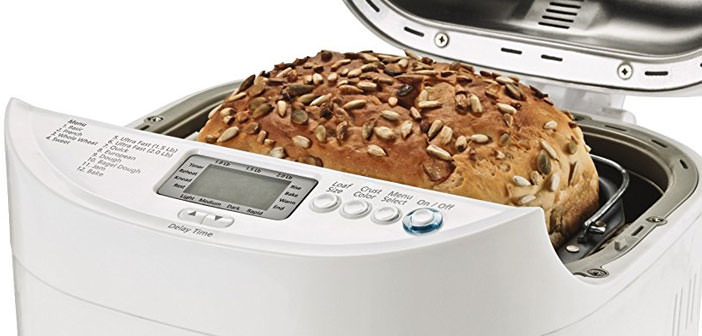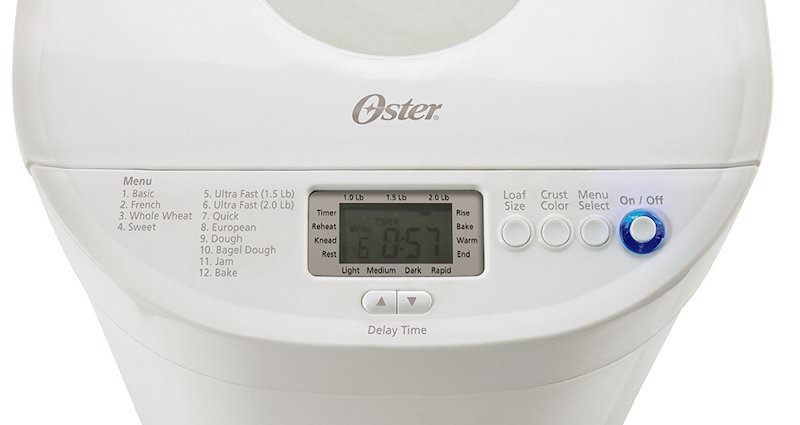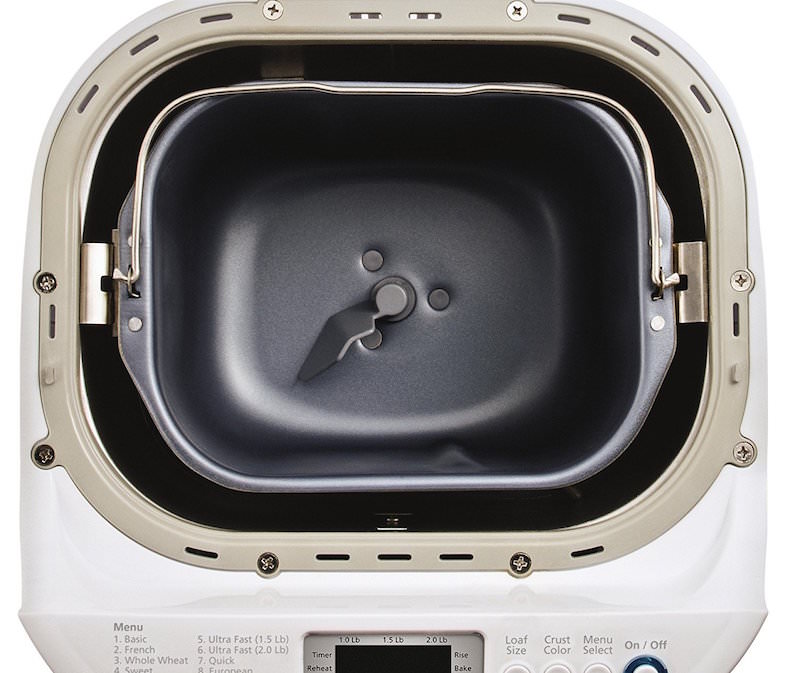How to Buy the Best Bread Machines
Bread Machines differ in number and type of programs. The higher the number of programs and the more versatile the machine is the more suitable for different types of needs.
Table of Contents
Decisive factors for choosing the bread machines
Programs
Bread machines differ in number and type of programs. The higher the number of programs and the more versatile the Bread Machine is, the more suitable it is for different needs. What essentially changes in the program schedule is the processing time, depending on the machine’s phase and temperature.
Most bread machines have programs to work with white, french, wholemeal bread, fresh bread, and quick program. The latter is useful if you have little time available.
There are also more specific programs suitable for single cooking, the only dough, for fresh pasta, longer leavening programs for those who use the mother pasta (or want the leavening times to be longer), programs for poolish ( Dough with little yeast), jam, yogurt, for desserts (with or without yeast).
It is also worth mentioning the gluten-free meal program, which is more difficult to work and requires different times than traditional standard programs, and programs for different types of flour (Kamut, spelt, rye).
Power
A bread machine’s power is that value, expressed in watts (W), which indicates how much energy it is needed to work and bake dough. This means that greater power will affect the blade’s ability (or blades) to work the dough; The greater the number of blades, the greater the contact between the work produced by the engine and the dough.
Not only that, but it also determines the heat output by influencing the heating speed of the resistances inside. Power is also synonymous with integrity over time: a mighty engine will hardly be difficult by the workload.
So it is important to evaluate to choose a bread machine how much dough (and what type) this will have to work, the number of blades (and their movement since there are models with blades) that the engine will move about the power generated.
In general, if you plan to pan out several times a week, the machine should have good power and two kneading blades (preferably the most if you are celiac and/or you will use hard flour to work).
Functions
The third factor to consider when selecting a bread machine is additional features that make it more convenient and practical. Most bread machines incorporate some, varying in quantity depending on the quality and sophistication of the machine. Bread machines usually enable the activation and set of functions through a control panel and LCD display.
Below we list the most common functions by doing a small focus on each of them, so you can see better than what it is:
- Size selection: Some bread machines involve creating bread of different sizes, and this feature allows the machine to automatically set the appropriate settings for the desired shape. Usually, the machines that offer this option also include the special molds (which we will discuss when handling the accessories).
- Late start: also called delayed start or timer, this function allows the start of the bread machine to be ready for the desired time. The postponement usually takes about 13 hours; Great if you spend a lot of time out of the house and do not have much time available. If you should remember that you cannot use this function with all programs, you should avoid using ingredients that may become less salubrious over time (e.g., eggs and milk).
- Glazing Level Setting: Some machines allow you to choose between two or three gilding levels, depending on whether you prefer crunchy.
- Keeping warm: As the name itself says, it is useful to keep the bread warm. It is a function that automatically starts at the end of the baking cycle and is useful for eating hot bread. Usually, this function can ” dry ” a bit of the bread.
- Adding ingredients: The bread machine usually has several (at least a couple) dough cycles. Therefore, the addition of raisins, pine nuts, nuts, olives, chocolate is advisable before the last dough phase. Some bread machines signal (usually through acoustic signals) when necessary to add these ingredients. With this feature, some models integrate dispensers for automatic release.
- Pad Memory: This is a somewhat more specific feature. It is integrated into many bread machines to save the work done (and set program) and avoid voltage drops or blackouts. Usually, the buffer battery lasts approximately 5 minutes. Some models increase this time (from 7/8 minutes up to even rarer models, up to 60 minutes).
Capacity
Many bread machines offer the possibility of working bread of different sizes; Usually, most work from 500 g total dough (based on all ingredients) to 750 g to 1 kg. For example, above the machine display below, you can notice two icons that indicate which of the two available breadcrumbs has been set.
Some machines work less than 350 g or more, 1.2 kg, 1.5 kg, 1.8 kg. For the latter, it would be ideal to have an additional accessory blade. Better if two so, though this talk is worth a bit for all the capabilities, more importantly, for high-capacity use to avoid too much effort on the engine.
In short, one thing is kneading a half and a half with a shovel and one thing with two. To encourage mixing the ingredients more easily, it would be better for the basket to develop horizontally than vertically.
Always in terms of capacity, we also point out that some bread machines allow you to prepare not only the classic loaf but also bread of different sizes and sizes.
This is possible thanks to special molds, which we will deal with within the next section. In addition, the special programs we have already mentioned regulate the temperature and cooking times according to the desired size.
Accessories
Another decisive factor to consider is the accessories supplied with the bread machine. We can distinguish them into two categories, which we will now look at separately in detail.
Molds
The presence of molds makes the bread machine more versatile: they allow them to create different sizes. For example, the classic basket would only create bread with the classic cassette shape.
To be able to create other types of bread, molds are also needed. To meet this need, there are models in the market that come with different molds: baguettes, sandwiches, slippers, bagels (steaming buns).
Other accessories
In addition to the molds, we find other useful accessories to simplify work: the most common and present in all models is the hook to extract the kneader from the bread after cooking.
Other accessories that can find are the various doses, the knife blades (usually supplied with the molds and the baguette’s support). Finally, in the case of machines that also feature yogurt, the jars Accessories (but at the moment are a rarity).
Finally, we spend a word on the recipe: its present presence can be beneficial, especially for those with the first experiences with this type of household appliance.
In particular, in the beginning, it is recommended that you follow the instructions in the letter until you have the experience to personalize your recipes or even vent your experiment.
Other factors to keep in mind when choosing a bread machine
Is the material important?
On the market, we can find different models of bread machines. What differentiates them from small details about their structure, such as the porthole for controlling cooking, non-slip feet, interior light, and dimensions, is the nature of the production materials. These are divided into two major categories: metal and plastic.
Is plastic synonymous with lesser quality? Let’s put it that way. It depends on the use you are going to make it. Surely if you are going to bake every day, the ideal would be to use a more resistant model to constant mechanical strain and temperature fluctuations. While no problem if you use the machine one by one: today, the plastic coatings of bread machines are mostly excellent and with good insulation power.
Controversies are often the materials that makeup blades and baskets. Very few manufacturers use Teflon-free materials for non-stick coatings of blades and baskets; Quantum is a bit of a titanium-based material lately. Not all manufacturers produce technical data on the materials’ nature, not the most if you are looking for a PFOA-free product.
Is the brand important?
Yes. Let’s explain why. It’s important to keep in mind that each brand has its own service. Look for more well-known brands, and you know the reliability allows you to have more security. This is because it may be fame to produce good products and have problems with the bread machine.
You know that you will address those who will solve the problem and in a relatively short time. Additionally, a good brand provides a lot of information to users, including online viewable instructions directly on their sites and the first recipes they can draw.
Especially for those who buy online, it is important to support and respond quickly to your requests. You have to keep in mind that some parts of the machine will inevitably wear out with time; This means that it is useful to know if the same brand has spare parts available and if these are easily available.
Is the price important?
The prices of bread machines vary from about fifty euros to a price of around two hundred euros. The presence of: often justifies the price increase.
- A good power that allows the working engine and endurance.
- Stronger and more durable construction materials.
- More programs.
- Possibility to bake with accessories for different forms of bread.
- Presence of a buffer battery (long life).
If you aim at a quality machine (and doing your job over time), the selling price will be significantly higher.



